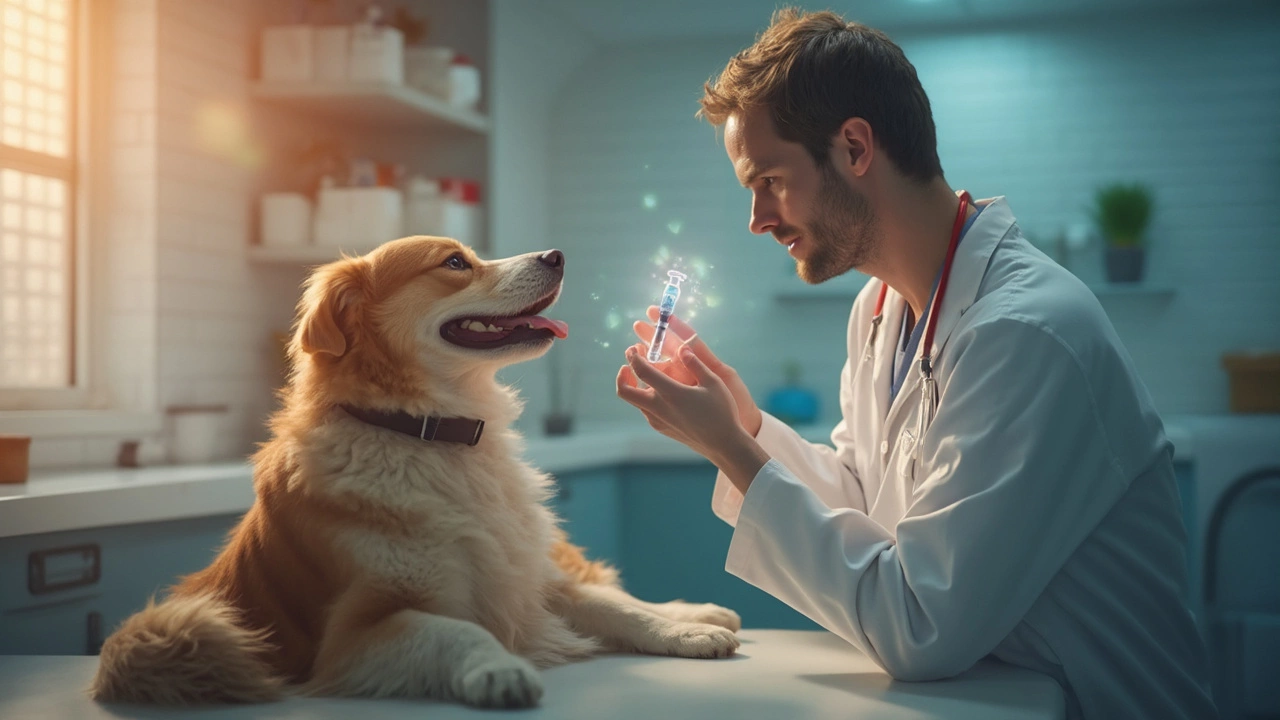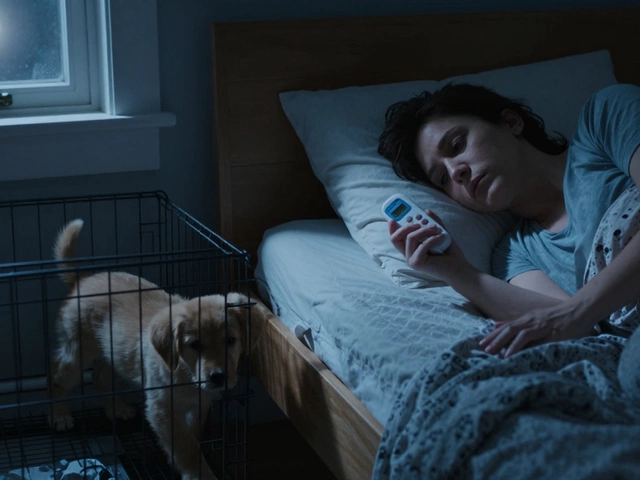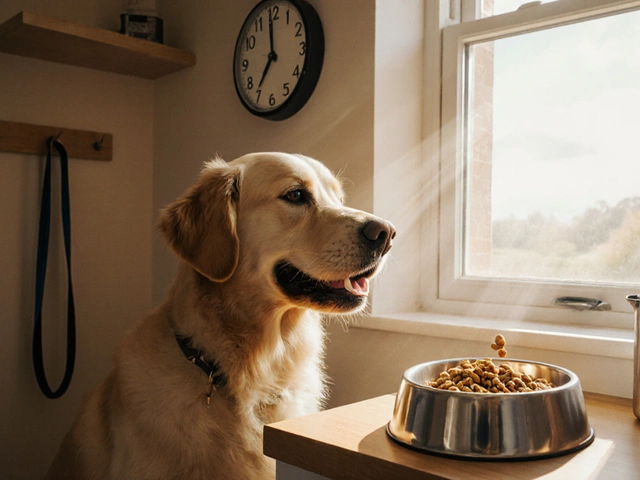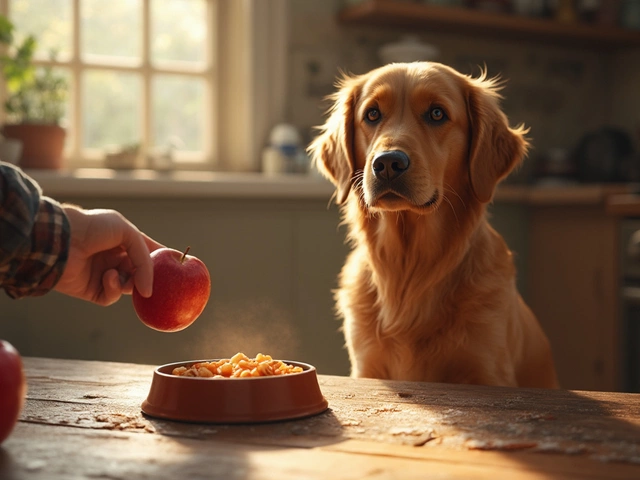Ever wondered what's really in that small syringe when your four-legged buddy gets their 5 in 1 vaccine? It might sound a bit like a science experiment, but it's actually a nifty way to keep your doggo healthy with fewer trips to the vet. This single shot covers multiple diseases, so you don't have to worry about juggling different vaccines or mixing them up.
The 5 in 1 vaccine basically rolls protection against five nasty diseases into one jab. You’ve got the usual suspects like distemper, adenovirus, parvovirus, and parainfluenza, plus a newer addition, leptospirosis, which is a good call if your pup likes splashing in puddles or rivers.
Understanding these diseases and their prevention can save you a world of trouble later on. After all, keeping your pet healthy is all about playing it smart, right? Knowing how each component works might even make your next vet visit feel a bit less daunting and way more insightful.
- What is the 5 in 1 Dog Vaccine?
- Components and Benefits
- Vaccination Schedule and Frequency
- Common Side Effects and Precautions
What is the 5 in 1 Dog Vaccine?
The 5 in 1 dog vaccine is like a superhero shot for your furry pal, protecting them from five different diseases in one go. It's a core vaccine that almost every pup should get to ensure they're less likely to catch some really nasty stuff.
This vaccine covers:
- Distemper: A virus that can be really rough on your dog's respiratory, gastrointestinal, and nervous systems. Think of it as a harsh flu but way worse.
- Adenovirus: Protects against hepatitis in dogs, which can mess with your pup's liver.
- Parvovirus: Highly contagious and mainly affects puppies, causing severe vomiting and diarrhea. Nobody wants a pup going through that.
- Parainfluenza: One of the viruses that can cause kennel cough, making your otherwise happy dog cough as if they've been smoking a pack a day.
- Leptospirosis: This one's not always included by default but is often part of the mix nowadays, especially if your dog loves outdoor adventures. It's a bacterial infection that can spread to humans too.
Getting this combo shot means your dog needs fewer needle pokes, which makes vet visits a bit less scary for them and definitely easier on your wallet. It's like hitting the 'easy' button for keeping your dog healthy. If you’d rather not deal with scheduling separate vaccines, this is the way to go.
Talk to your vet about whether the 5 in 1 vaccine is right for your doggo. They might have specific recommendations based on your dog's age, health, and lifestyle (such as if they're more of a stay-at-home snuggler or the adventurous type).
Components and Benefits
The 5 in 1 dog vaccine might sound like some sort of magic potion for dogs, but it’s really a clever blend of five vaccines wrapped into one convenient injection. Each component plays a crucial role in safeguarding your furry mate against common and harmful diseases.
Here's a breakdown of what’s inside:
- Distemper: This virus is no joke. It can cause serious respiratory, neurological, and digestive issues. The vaccine helps prevent these nasty outcomes, keeping your dog fit and lively.
- Adenovirus: Often linked with canine hepatitis, this can hit the liver hard. Luckily, the 5 in 1 vaccine's adenovirus component is all about keeping that liver ticking healthily.
- Parvovirus: Known for being highly contagious and super tough on puppies, parvo is something you definitely want to avoid. It mostly affects the intestines, with symptoms like severe vomiting and diarrhea. The vaccine bolsters your pup’s defenses against it.
- Parainfluenza: This is one of the culprits behind kennel cough. It’s super contagious, especially in busy places like dog parks or kennels. Getting your dog vaccinated helps stop this illness from spreading.
- Leptospirosis: Added to many 5 in 1 vaccines these days, this bacteria can be caught in the wild, mainly through water. It can cause kidney damage and other serious issues, so having this protection is a real lifesaver.
All these protections might make you wonder what happens if these are skipped. Missing out on this combo leaves your dog vulnerable to infections, and let’s face it, vet visits for treating these illnesses are way less fun than a simple jab.
But it’s not just about preventing diseases. It’s about peace of mind, knowing your dog is well-protected against serious threats. Plus, it’s a pretty neat way to stay ahead of the curve with fewer vet visits and less stress for both you and your pup.

Vaccination Schedule and Frequency
When it comes to keeping your pup protected, knowing the right vaccination schedule is key. The 5 in 1 dog vaccine usually gets administered to puppies and then requires regular booster shots to maintain immunity. So, here’s the scoop on how often your furry friend should visit the vet for this important jab.
For starters, puppies typically start their 5 in 1 series at around 6-8 weeks old. This is because their immune system is still developing, and getting ahead of potentially harmful diseases is super important. Here's how it generally rolls out:
- Initial vaccinations: Start the series between 6-8 weeks of age.
- Follow-up shots: Receive additional doses every 3-4 weeks until the puppy is about 16-20 weeks old.
- Booster shots: After the initial series, a booster is usually given at one year, followed by every 1-3 years depending on your vet's advice and local regulations.
If you're like me, remembering those dates might feel like juggling too many balls. Some pet parents find it handy to set reminders on their phone or put those vaccine cards on the fridge to keep track. It’s all about keeping those vet appointments consistent.
And while we're at it, don't forget that these recommendations might vary based on your dog's lifestyle and your vet's advice. Dogs who love hiking or spending time around water may need more frequent updates to guard against leptospirosis, for instance. Having a chat with your vet can really tailor the best plan for your specific pooch and lifestyle.
Common Side Effects and Precautions
So you've taken your pup for their 5 in 1 dog vaccine, and now they're gazing at you with those adorable puppy eyes. But wait, are those eyes looking a bit droopy? Sometimes, vaccines can come with minor side effects, and it’s good to know what to watch for. Generally, side effects are pretty mild and temporary, like your dog feeling a bit under the weather for a day or two. Think of it as their immune system getting a workout.
Here’s a rundown of what you might notice:
- Lethargy: Your pet might be a little more sluggish than usual.
- Loss of appetite: Not interested in their favorite food? Don’t fret; it usually passes quickly.
- Swelling at injection site: A little lump or tenderness might appear where the shot was given. It should go away in a couple of days.
- Mild fever: Slightly elevated body temperatures can happen but aren't a big deal.
On the rare chance something more serious happens, like severe lethargy or a serious allergic reaction (swelling in face or trouble breathing), give your vet a call.
When it comes to precautions, timing the dog vaccine is key. Make sure your canine companion is in good health before getting vaccinated. It’s not a good idea to vaccinate if they’re sick or under stress (like a big move or new family member entering the home). Keep your dog's vaccination records handy so you and your vet can keep track of when the next pet vaccinations are due.
A handy tip? Keep them calm and comfy after the shot. A little TLC goes a long way. Remember, a bit of discomfort now means a world of protection later, keeping those nasty diseases at bay.







